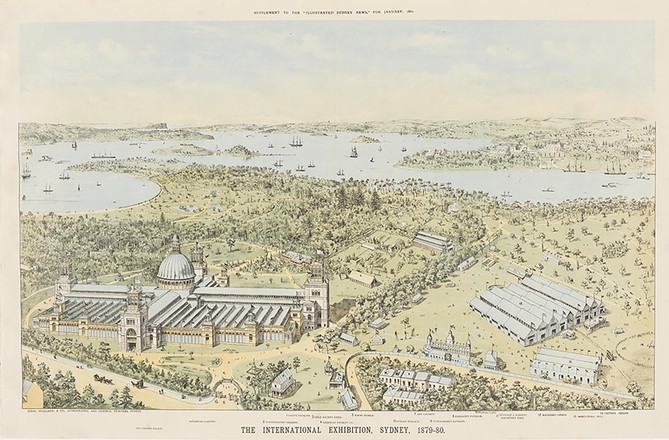The Sydney International Exhibition, 1879
The Sydney International Exhibition was the colony's first and
was responsible for bringing the world to Sydney at a time when the colony was
prosperous and full of potential. It boosted the economy and encouraged
authorities to improve the city’s services and facilities. A steam-powered
tramway was installed to transport exhibition-goers around the city. After the
exhibition, the tramway network was expanded and by 1905–06 the trams were
converted to electric traction.
Official records cite that between 19,853 and 24,000 visitors attended the exhibition on the
opening day of 17 September 1879 and over 1.1 million people visited during its
seven months of operation. Despite exceeding the predicted cost by almost four
times, it was deemed a resounding success.
Season tickets for the exhibition cost £3 3s which entitled the
holder to unlimited entry during all hours of general admission. Throughout the
exhibition, season ticket holders accounted for 76,278 admissions.
After the exhibition closed, the imposing Garden Palace building
was used as office space and storage for various government departments.
International Exhibitions presented the opportunity for
countries to express their national identities and demonstrate their economic
and techological achievements. They allowed countries to showcase the very best
examples of contemporary art, handicrafts
and the latest technologies particularly in manufacturing. Thirty four
countries and their colonies participated in the Sydney International
Exhibition. They presented approximately 14,000 exhibits which included
displays of glass, tapestries, fine porcelain, ethnographic specimens and heavy
machinery.
After the exhibition closed, the imposing Garden Palace
building was used as office space and storage for various government
departments.



 Back to list
Back to list